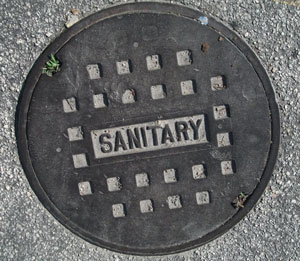Wastewater (Sewer)
Every time used water runs down the drain inside a home or flushes down the toilet, it travels through about 900 miles of sanitary sewer lines to the Regional Wastewater Control Facility (RWCF), where it is treated before going into local waterways.
Facts
- The RWCF has the capacity to treat 55 million gallons of sewage per day.
- The facility collects and treats an average of 33 million gallons of wastewater daily, from approximately 116,000 sewer connections in the City and nearby San Joaquin County areas.
- The RWCF cogeneration facility generates 17,600 kilowatts/year.
- The decomposition process for biosolids provides some of the energy for the engine generators.
- This onsite energy production supplies most of the plant's power needs.
- The RWCF three-stage treatment operations are closely regulated under the Wastewater National Pollutant Discharge Elimination System (NPDES) permit.
- The NPDES permit requires a Sewer System Management Plan (SSMP) to operate and maintain the treatment facility and procedures for Sanitary Sewer Overflows (SSOs).
Report Problems
- To report sewer spills, odors, leaks, or after-hours emergency assistance:
- Call the City of Stockton 24-hour Emergency Service Center.
- To pay your bill, ask billing questions or start/stop sewer service:
- Contact the Utility Billing Department.
Wastewater Master Plan Update
- The 2022 Wastewater Master Plan Update (WWMPU) revised the 2008 Wastewater Master Plan in accordance with the Envision Stockton 2040 General Plan Update.
- The WWMPU includes the recalibration of the collections system hydraulic model to evaluate the existing wastewater collection system infrastructure, address potential impacts of planned development growth, and develop a comprehensive roadmap for the City’s wastewater collection system Municipal Utilities Department (MUD) Capital Improvement Plan.
External Links
State Water Resources Control Board - Statewide General Discharge Order
Environmental Protection Agency (EPA) - Dental Effluent Guidelines
This City of Stockton web page last reviewed on --- 6/29/2023

